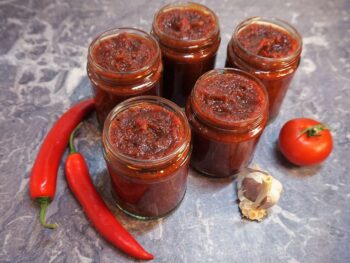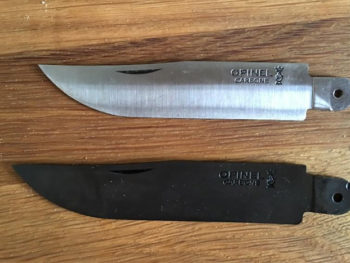There is no doubt that Alfredo Sauce is one of the most creamy and unique ingredients you can use to complement your meals. However, various steps and methods are involved in creating the sauce. The key to success is getting the right sauce consistency, which often involves thinning techniques.
In this post, we answer an important question you might have asked,”what is the best way for how to thin out Alfredo Sauce?”
The best way to thin out Alfredo sauce is to use three main ingredients which are cream, butter, and cheese. You start by melting the butter in a saucepan for up to 4 minutes, then add flour until it’s well mixed. Finally, add some milk and season the mixture with some salt.
Thinning out Alfredo Sauce

Below are the kitchen ingredients involved in thinning out Alfredo sauce:
- 1 Tablespoon of ream for each cup of Alfredo sauce
- 1 teaspoon of cornstarch.
- 3 tablespoons of pure butter.
- Well chopped garlic cloves.
- 1 glass of milk
- Well chopped chicken pieces, preferably diced.
Techniques for Thinning Out Alfredo in 3 Simple Steps
There are various techniques you can use thin-out Alfredo sauce, and it all boils down to your personal preferences. Below is an in-depth description of all these methods you should consider using:
Recommended Products
| Product | Description | Amazon Link |
| Saucepot | For setting the alfredo sauce. | Blackmoor 65740 Quart Saucepan |
| Whisking tool | For mixing the Alfredo Sauce. | Ouddy Store Whisks |
| Grill | For melting the ingredients. | Cuisinart CG90 |
Technique #1
- Get a large saucepot, and set the stove to moderate heat.
- Add some cream and three tablespoons of the unflavored butter.
- Next, whisk the mixture, and ensure you don’t create any lumps.
- Then, add some salt, pepper, and garlic to the mixture.
- Add some diced chicken to the setup during the whisking process.
- Cook the meal until the sauce thickens.
- Get the grill on slow heat, and add some parmesan cheese.
- Finally, stir until the mixture melts completely.
Technique #2
- Set the saucepan on the stovetop.
- Then heat the butter until it melts completely.
- Add some garlic and onions to the setup, then let it saute for a few minutes.
- Add some flour to the mixture, and let it cook on medium heat for a few minutes.
- Keep stirring the set-up to avoid any burning issues.
- Once the mixture starts bubbling, add a small amount of milk to the set-up.
- Then wait for a few minutes for it to thicken before you add extra milk.
Pro Tip!: NEVER let it boil! Remove the sauce from the stovetop once it starts simmering.
Technique #3
This technique involves a slightly different approach, which involves thinning out the sauce first. You must do this, especially when you want to use dry pasta shapes such as penne. The reason is that such products don’t often have their sauces. To achieve this goal, the steps involved will include
- Dissolve any excess pasta amounts into a pan containing the sauce.
- Once you achieve the ideal consistency level, add some vegetable or chicken broth to the setup.
- Do this until you achieve the right consistency level.
How To Thin Out Alfredo Jar Sauce – in 4 Steps

Remember that thinning out Alfredo Jar sauce involves a unique approach. The reason is that Alfredo sauce jars are sometimes too dense to use in meals. Fortunately, there are various techniques you can use to address this issue.
If the sauce is too dense, add some additional milk or cream. In addition, there are various other techniques you can use to thicken the sauce conveniently. You can start this process by adding equal amounts of water to butter and cheese or oil.
The amount of water, cheese or oil you add also depends on the density of the sauce mixture. If you prefer the thick Alfredo sauce type, consider using similar amounts of butter and cheese. However, if you prefer the thinner version, use cheese and oil as alternatives.
The other alternative is to open the jar and add milk or chicken broth to the mixture. The ideal ratio would be one tablespoon for every three tablespoons of Alfredo sauce that you use. Follow along with the steps mentioned below to complete this process:
- Next, stir the mixture thoroughly. Add the broth or milk to the mixture if the setup needs some liquid.
- Mix it again for a few minutes, such that the starch in the past can take in the moisture from your milk or broth. Completing these steps will help restore the quality of your sauce.
- You can also use another method by just opening your jar and carefully adding a bit of milk or chicken broth at a ratio of about one tablespoon per every three tablespoons of alfredo sauce. Then stir thoroughly!
- If you need a little more liquid, mix in a little broth again. Let the mixture sit for five minutes so the starch from the pasta can absorb some moisture from the milk, and your sauce will be as good as new.
Why is My Alfredo Sauce Too Thick? (+ Solutions)

Below are some reasons why your alfredo sauce might be unusually thick, and a few helpful remedies for the issue:
- Wrong Pasta Sauce: Sauce Ratio
The first reason is that you might have added excessive pasta into your sauce. Therefore, ensure you add a sufficient amount to maintain its consistency. Remember that pasta contains starch, and this might lead to sauce thickening.
Solution: If you have additional sauce, add it to the dish to help make it less dry. A good suggestion is to add the sauce to the pasta compared to adding pasta to the sauce.
- Excessive Flour Usage

Most Alfredo Sauce recipes require the addition of flour. The flour helps thicken the setup, especially for people who like to regulate the amount of dairy they consume. The issue with excessive flour is that it can soak the liquid in your sauce, which might cause it to become thick.
Solution: The best way to thin our Alfredo Sauce is to use a light liquid. Pasta water is ideal for thinning when you have excessive flour amounts. The product also has a unique pasta flavor, making it easy to complement the taste of your meals. The product is also helpful when you want to use some milk or when you want to calibrate the savory taste of your pasta.
- Excessive Cream Usage
Cream might be an essential component in your Alfredo Sauce recipes, but using it wrong can also easily lead to density issues. The best suggestion is to mix heavy cream with light cream using a half and half basis. Doing this ensures the sauce produces a suitable consistency level to suit different recipe types.
Solution: If you use large amounts of heavy cream, you will likely have a thick sauce that won’t be suitable for recipe meals. The best way to thin out the sauce is to use broth or pasta water.
- Excess Cheese
Cheese is also essential in Alfredo Sauce recipes. However, going overboard with the cheese can cause the sauce to become gooey and difficult to use. The sauce might also become difficult to consume when the cheese solidifies.
Solution: Add some broth or pasta water to the mixture, which will help to thin out the sauce.
- Excess Heat and Cooking for Long Durations

These factors can cause the Alfredo sauce to become excessively thick. The reason is that extreme heat leads to excessive moisture loss, thus leaving behind a highly solidified sauce.
Solution: Similar to the other challenges we outlined previously, you can address this issue with some stock or water. Using this process will help to reintroduce the moisture required to make your alfredo sauce thinner.
What Are the Best Agents for Thinning Out Thick Alfredo Sauce?
Below is a table that lists the best agents for thinning our thick alfredo sauce:
| Agent | Recommended Technique |
| Milk | Warm the milk and add the past to the mixture. Use half a cup for every 4 cups of pasta that you use. |
| Pasta water | Warm the mixture up and add at least ½ a cup of water to the mixture. Add the water until you get the ideal water consistency level. |
| Stock | Warm the mixture up and add ½ a cup of water to the mixture. Add the water until you get the right thickness level. |
Conclusion
Certain meals require thick Alfredo sauce for the best results. The best way to thicken the sauce is to use the evidence-based techniques mentioned above. With time, you will get good at this process and won’t have to worry about whether the sauce is too thick or light.
- How Long Does Vegan Butter Last? Mystery Solved - January 9, 2024
- How Long Does Vegan Mayo Last - January 2, 2024
- From Pot to Plate: How Long Does Vegan Chili Last in The Fridge? - December 26, 2023













 Casey’s Breakfast Pizza Recipe: Iowa Special
Casey’s Breakfast Pizza Recipe: Iowa Special